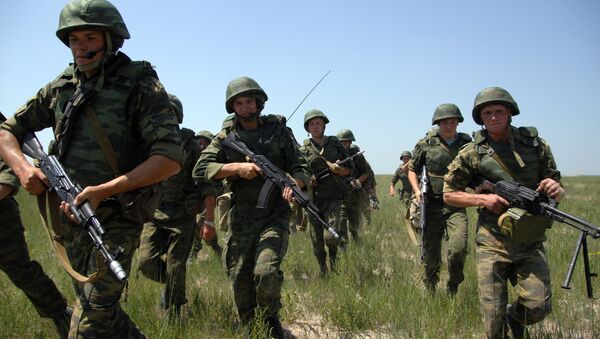Russia is entering a new phase of military reform, as Moscow renounces the 150-year-old military-district system in favor of tactical-strategic commands.
The six military districts nationwide will be replaced with four tactical-strategic commands with headquarters in Khabarovsk, Yekaterinburg, St. Petersburg and Rostov-on-Don. All sections of the military, including the Navy, the Air Force and the Air-Defense Force, will be subordinated to their respective commanders. These commands will clearly be much larger than military districts. For instance, the East Command will comprise the Far Eastern Military District and part of the Siberian Military District, as well as the Pacific Fleet. The Moscow and Leningrad military districts will merge into the West Command. The South Command will be established on the basis of the somewhat reduced North Caucasus Military District and the Caspian Flotilla.
Although a reform stipulating the replacement of military districts with multi-service commands was contemplated long ago, the mechanism required in order to implement it raises many questions. It is unclear how prepared Russian generals and officers are to command formations like this comprising such diverse forces. Moreover, how effectively would these formations react to various threats arising in the vast areas for which they are responsible both inside and outside Russia? This primarily concerns fleet-control operations, including those in remote theaters of war, such as the Indian Ocean, the Mediterranean Sea and other strategic regions.
Naval officers should play a far greater role in inter-service commands, so as to facilitate effective command and control, because the Navy would otherwise lose its independent service status and would turn into the Army's naval division instead. That would leave the Navy unable to accomplish most of its objectives.
Headquarters and military units lack modern troop-control and telecommunications equipment. Without taking their technical capabilities into account, overhauling the way the military is organized will fail to produce the required results and risks seriously impairing troop controllability which even today is far from ideal.
Although the Russian Armed Forces have started receiving additional military equipment, they still lack modern weapons and equipment. This problem is aggravated by discrepancies in the national system for managing state defense contracts.
This system comprises two parallel departments, namely, the Federal Service for Defense Contracts (Rosoboronzakaz) and the Federal Agency for Military and Special-Purpose Procurement (Rosoboronpostavka), whose functions largely duplicate each other.
Ineffective state defence-contract management and the 2009 global financial and economic crisis delayed the signing of numerous defense contracts. Moreover, the corruption-prone system still lacks transparency.
The procurement of modern control-and-communications systems and the production of state-of-the-art aircraft and helicopters for the Air Force and warships for the Navy are falling behind schedule. This is the most serious problem this sector faces.
In many cases, though, companies fulfilling specific contracts should shoulder some of the blame, not just the Defense Ministry.
The opinions expressed in this article are the author's and do not necessarily represent those of RIA Novosti.
MOSCOW. (RIA Novosti military commentator Ilya Kramnik)



